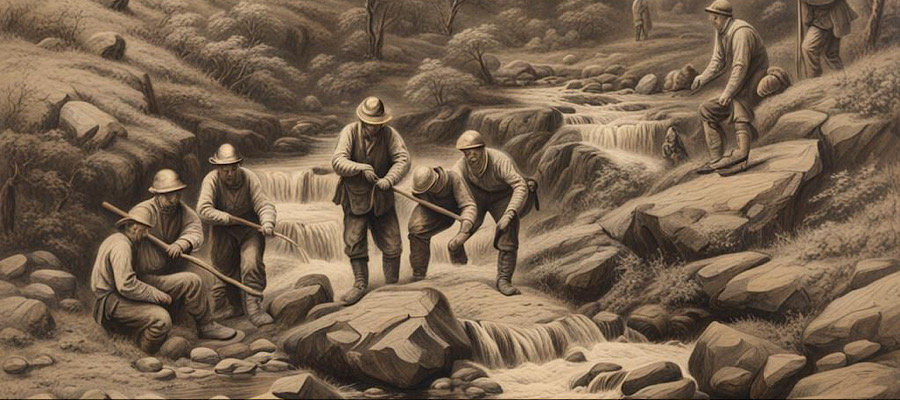GOLD! It captures the imagination and runs through history like a river. Men have lived and died for the stuff. Conquered worlds for the stuff. Sailed the Seven Seas for it. Plundered it. Horded it. Few can afford it.
Wales has some of the purest gold in the world. it’s no wonder, then, that the greedy Romans had their eyes on it.
The occupation of Wales took place between 70-80 CE. Around 70 CE they established a fort in the area that now encompasses the village of Pumsaint in Carmarthenshire. Mining activity started soon after at Daulcothi an Open Cast mine with a few adits to exploit the seams. The fort was established to protect the mines
You can almost hear them asking if there was any more of the stuff lying about.
Around the same time a large fort was being built at Segontium near present day Caernarfon. No doubt they asked a similar question. Enter the fort of Tomen y Mur as its called today. Situated 300m above sea level, admittedly next to Sarn Helen, a meandering stretch of roads that wander for 260 kms through the hills of Wales, from Carmarthen to Aberconwy. Why on earth anyone would build a fort in this place is anybody’s guess. My guess it was to protect the gold mines that they were going to dig. Well, apart from a few trial holes in the hillsides they never found any and abandoned the place in 140 CE. and thereby hangs another tale.
Legend has it that in the mid C19th, a farmer tending his flocks in the fields above the upper Mawddach, in what is now Coed y Brenin, lost his dog down a hole. He returned home to fetch tools and help. On digging out the beast they came upon a seam of gold bearing ore. Gwynfynydd was born. The rush was on. To day the lovely walk takes you to the remains of the Industrial site and the modern entrance. The original seam starts higher up the hillside above the river. Only the cognoscenti know of its exact location.
Mining in what is known these days as The Dolgellau Gold Belt which stretches in an arc from Barmouth on the coast where the Mawddach Estuary spills into the sea about 15 miles north to the Vale of Ffestiniog belt had been the focus if activities since Neolithic times. Those mines producing Copper and Lead. Panning for Gold in the streams and rivers had also been a long standing tradition. Gold seams were been discovered in in 1854, hidden away in the quartz intrusions that litter the landscape in this part of Eryri. One of these mines, the Clogau developed into full scale gold production, later joined by the nearby Vigra mine and both extracting from the St. David’s lode. The Clogau mine went on to produce nearly 2.5 tonnes of gold between 1862 and 1911. Traditionally this mine provide the gold for the wedding rings of the English Royal Family.
The mining and production of the ore carried on through the early years of the century, it didn’t really get going until after the 1850’s, faltered again during the latter part of the century, continuing into the 20th and then haphazardly until the late 1990’s; when it became uneconomical to extract any further ore. Both mines gave up the ghost in 1998.
The Gwynfynydd mine at the confluence of the rivers Gain and Mawddach, deep in the forest of Coed y Brenin was the very last



